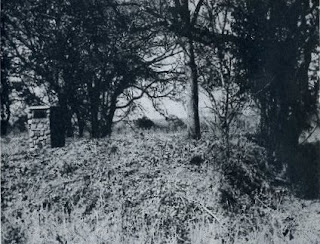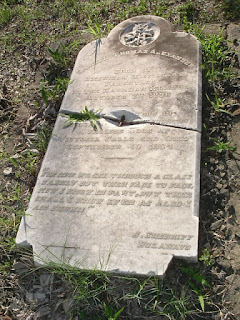APPENDIX I (from Richard Sampson's book "So this was Lusakaas")
File No. KDC/26/1 at regional archives.
Lusaka School Registers 1925
Girls:
Oosthuizen EJ., 14 years;
Erasmus MJ., 15 years,
Ralph S.R., 14 years;
Maritz, Alice, 11 years;
Wienand A.N. 10 years;
Hobbs D.E., 9 years;
Myburgh J.E. 10 years;
Botha, Corrie, 8 years,
Hattingh Katy, 8 years;
Doyle, Kathleen, 8 years;
Doyle, Brenda, 7 years;
Venter Martha, 9 years;
Wienand, Jacqueline, 7 years;
Nel, Maria, 8 years.
Erasmus MJ., 15 years,
Ralph S.R., 14 years;
Maritz, Alice, 11 years;
Wienand A.N. 10 years;
Hobbs D.E., 9 years;
Myburgh J.E. 10 years;
Botha, Corrie, 8 years,
Hattingh Katy, 8 years;
Doyle, Kathleen, 8 years;
Doyle, Brenda, 7 years;
Venter Martha, 9 years;
Wienand, Jacqueline, 7 years;
Nel, Maria, 8 years.
Boys:
Neethling H.J., 15 years;
Wienand R.H., 13 years;
Erasmus Jacob, 12 years;
Hadden, James, 10 years,
Nel O.I., 15 years;
Nel, J.D. 13 years;
Nel, C.A.S. 10 years,
Erasmus, J.S. 8 years,
Botha, Wikus, 7 years;
Voss, Jocy, 9 years;
Wroe, Richard, 10 years
Wroe, Pendennis, 8 years;
Wroe, James, 12 years;
Voss, Louis, 7 years;
Voss, Henry;
Botha,G.B.
Wienand R.H., 13 years;
Erasmus Jacob, 12 years;
Hadden, James, 10 years,
Nel O.I., 15 years;
Nel, J.D. 13 years;
Nel, C.A.S. 10 years,
Erasmus, J.S. 8 years,
Botha, Wikus, 7 years;
Voss, Jocy, 9 years;
Wroe, Richard, 10 years
Wroe, Pendennis, 8 years;
Wroe, James, 12 years;
Voss, Louis, 7 years;
Voss, Henry;
Botha,G.B.
Girls:
Vos, Susie, 16 years;
Vos, Helena, 15 years;
Landshurg, Wilkemina, 15 years;
Minne, Susanna, 16 years;
Geldenhuys. Francina, 11 years;
van Tonder, Elizabeth, 13 years;
Oberholster, Clasina, 8 years;
de Lange, Francina, 5 years;
Robbertze, Martha, 10 years;
Vos, Willem, 11 years.
Vos, Helena, 15 years;
Landshurg, Wilkemina, 15 years;
Minne, Susanna, 16 years;
Geldenhuys. Francina, 11 years;
van Tonder, Elizabeth, 13 years;
Oberholster, Clasina, 8 years;
de Lange, Francina, 5 years;
Robbertze, Martha, 10 years;
Vos, Willem, 11 years.
Boys:
Geldenhuys, Johannes, 16 years;
Joubert, Jacobus, 14 years;
Joubert, August, 12 years;
Minne, Gulluam, 14 years;
Jones, Carl, 11 years;
de Beer, Lourens, 9 years;
Geldenhuys, Paul, 14 years;
Jones, Cornelis, 9 years;
Joubert, Davis, 10 years;
Rochir, Sidney, 14 years;
Vos, George, 9 years;
de Beer, Mathys, 10 years;
Minne, Ignatus,11 years,
Geldenhuysm Josias, 6 years;
Robbertze, Barend, 13 years;
Oberholster, Edward, 13 years;
Rocher, Louis, 15 years.
Joubert, Jacobus, 14 years;
Joubert, August, 12 years;
Minne, Gulluam, 14 years;
Jones, Carl, 11 years;
de Beer, Lourens, 9 years;
Geldenhuys, Paul, 14 years;
Jones, Cornelis, 9 years;
Joubert, Davis, 10 years;
Rochir, Sidney, 14 years;
Vos, George, 9 years;
de Beer, Mathys, 10 years;
Minne, Ignatus,11 years,
Geldenhuysm Josias, 6 years;
Robbertze, Barend, 13 years;
Oberholster, Edward, 13 years;
Rocher, Louis, 15 years.
Girls:
Lindeque, Lena, 16 years;
Lombard, Martha, 16 years;
Botha, Susie, 13 years;
Gelliers, Hester, 12 years;
Lindeque, Johanna,12 years;
Myburgh, Maria, 12 years;
Uys, Petronella, 12 years;
Steyn, Johanna, 11 years;
Lindeque, Helena, 11 years;
Shanker, Sarah, 10 years;
Botha, Johanna 9 years;
Lindeque, Aletta, 9 years,
Lindeque, Cecilia, 9 years;
Bekker, Lenie, 8 years;
Carinus, Maria, 8 years;
Geldinhuys, Dirkie, 7 years;
Steyn, Nelie, 7 years;
Carius, Nellie, 6 years;
Uys, Catherina, 7 years.
Lombard, Martha, 16 years;
Botha, Susie, 13 years;
Gelliers, Hester, 12 years;
Lindeque, Johanna,12 years;
Myburgh, Maria, 12 years;
Uys, Petronella, 12 years;
Steyn, Johanna, 11 years;
Lindeque, Helena, 11 years;
Shanker, Sarah, 10 years;
Botha, Johanna 9 years;
Lindeque, Aletta, 9 years,
Lindeque, Cecilia, 9 years;
Bekker, Lenie, 8 years;
Carinus, Maria, 8 years;
Geldinhuys, Dirkie, 7 years;
Steyn, Nelie, 7 years;
Carius, Nellie, 6 years;
Uys, Catherina, 7 years.
Boys:
Bothma, Wessel, 16 years;
Celliers, Gideon, 16 years,
Shanker, Philip, 16 years;
Botha. Jan, 15 years;
Lindeque, Ignatius, 14 years;
Lindeque Justus, 14 years;
Celliers, Johan, 14 years,
Davel, Hendrik, 14 years,
Steyn Willem, 14 years
Davel, Leonard, 12 years;
Celliers, Sarel, 11 years;
Neethling, Daniel, 11 years;
Carinus, Andries, 10 years;
Bekker, Barend, 9 years;
Myburgh, Antonie, 9 years.
Steyn Frederick, 9 years;
Uys, Dirk, 8 years;
Carinus, Carl, 8 years,
Davel, Willem, 16 years.
Celliers, Gideon, 16 years,
Shanker, Philip, 16 years;
Botha. Jan, 15 years;
Lindeque, Ignatius, 14 years;
Lindeque Justus, 14 years;
Celliers, Johan, 14 years,
Davel, Hendrik, 14 years,
Steyn Willem, 14 years
Davel, Leonard, 12 years;
Celliers, Sarel, 11 years;
Neethling, Daniel, 11 years;
Carinus, Andries, 10 years;
Bekker, Barend, 9 years;
Myburgh, Antonie, 9 years.
Steyn Frederick, 9 years;
Uys, Dirk, 8 years;
Carinus, Carl, 8 years,
Davel, Willem, 16 years.
Girls:
Buckle, Louisa, 17 years;
Helbreg, Anna, 14 years;
Buckle, Betta, 9 years;
Nel, Ria, 12 years;
Minne, Johanna, 7 years.
Helbreg, Anna, 14 years;
Buckle, Betta, 9 years;
Nel, Ria, 12 years;
Minne, Johanna, 7 years.
Boys:
Helbreg, Martinus. 9 years,Buckle, Charles 14 years;
Buckle, Petrus, 12 years;
Eksteen, Casper, 8 years,
Nel, Hendrik, 14 years;
Human, Laurentius, 9 years,
van Heerden, Jacobus, 14 years.















